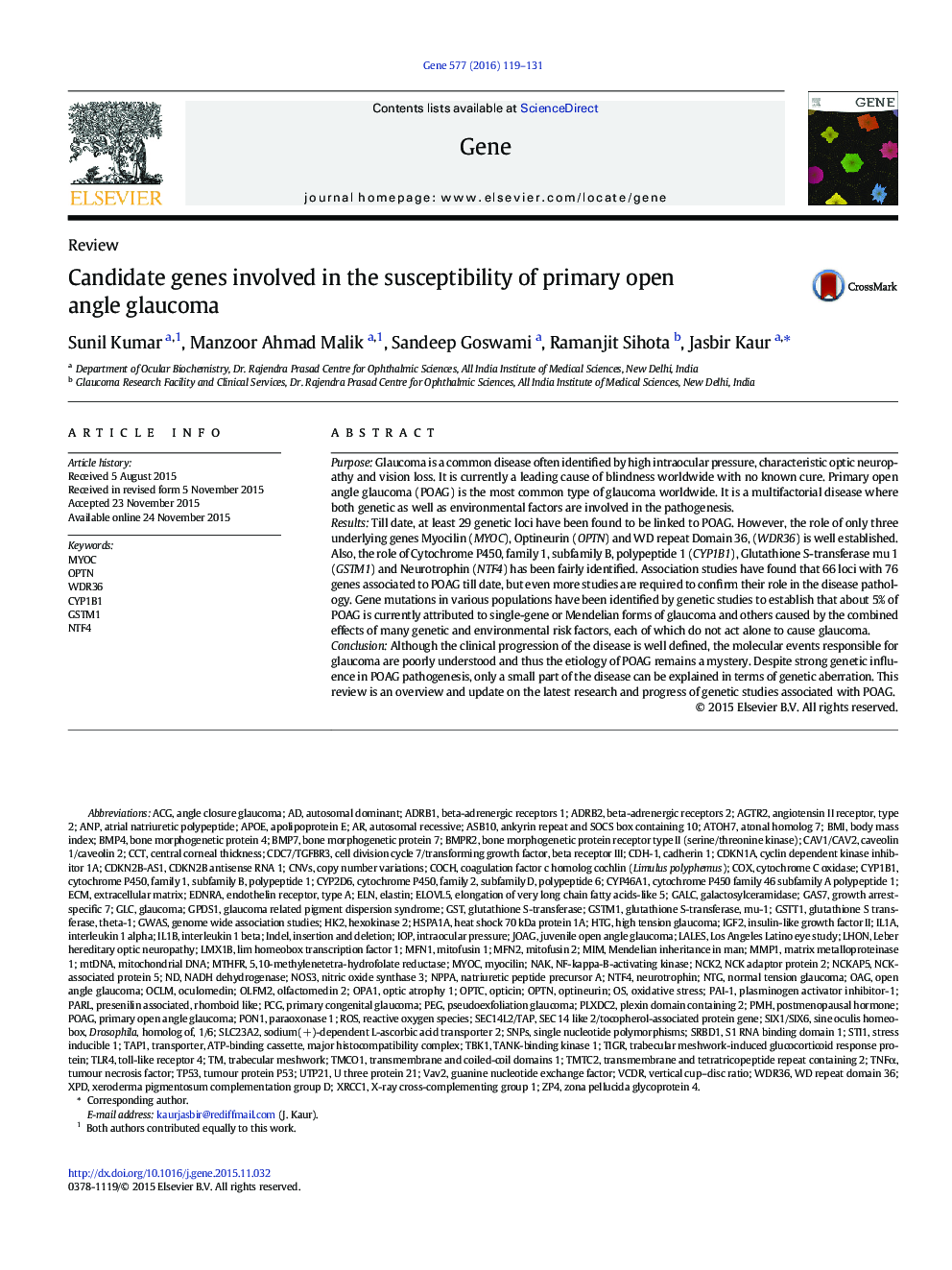| Article ID | Journal | Published Year | Pages | File Type |
|---|---|---|---|---|
| 5905232 | Gene | 2016 | 13 Pages |
â¢This review is an update on the role of candidate genes in POAG susceptibility.â¢Till date, at least 29 genetic loci have been linked to POAG.â¢Association studies have found 66 loci with 76 genes associated to POAG till date.
PurposeGlaucoma is a common disease often identified by high intraocular pressure, characteristic optic neuropathy and vision loss. It is currently a leading cause of blindness worldwide with no known cure. Primary open angle glaucoma (POAG) is the most common type of glaucoma worldwide. It is a multifactorial disease where both genetic as well as environmental factors are involved in the pathogenesis.ResultsTill date, at least 29 genetic loci have been found to be linked to POAG. However, the role of only three underlying genes Myocilin (MYOC), Optineurin (OPTN) and WD repeat Domain 36, (WDR36) is well established. Also, the role of Cytochrome P450, family 1, subfamily B, polypeptide 1 (CYP1B1), Glutathione S-transferase mu 1 (GSTM1) and Neurotrophin (NTF4) has been fairly identified. Association studies have found that 66 loci with 76 genes associated to POAG till date, but even more studies are required to confirm their role in the disease pathology. Gene mutations in various populations have been identified by genetic studies to establish that about 5% of POAG is currently attributed to single-gene or Mendelian forms of glaucoma and others caused by the combined effects of many genetic and environmental risk factors, each of which do not act alone to cause glaucoma.ConclusionAlthough the clinical progression of the disease is well defined, the molecular events responsible for glaucoma are poorly understood and thus the etiology of POAG remains a mystery. Despite strong genetic influence in POAG pathogenesis, only a small part of the disease can be explained in terms of genetic aberration. This review is an overview and update on the latest research and progress of genetic studies associated with POAG.
